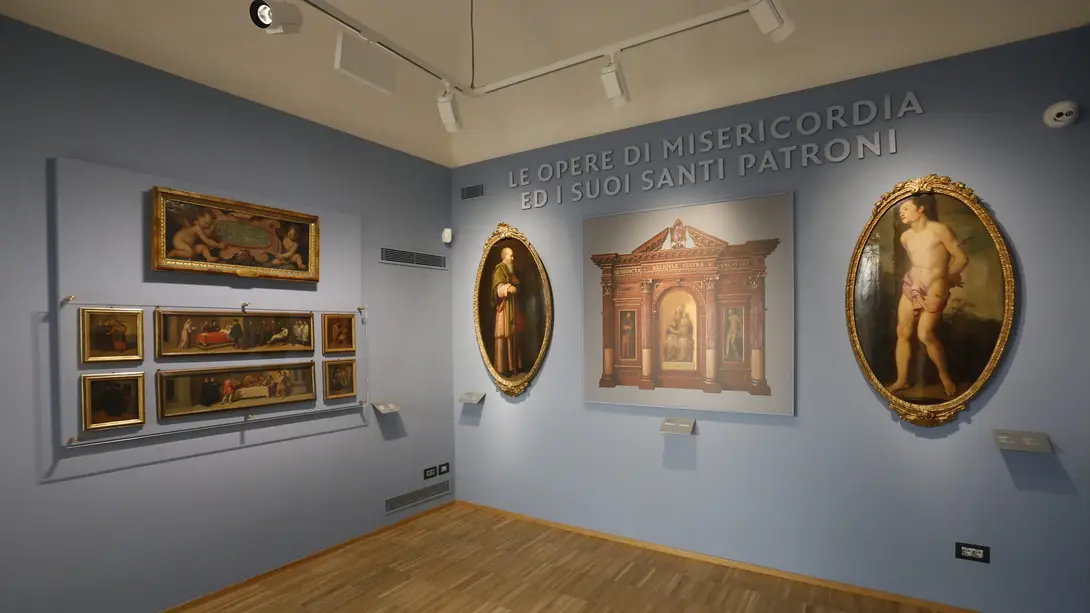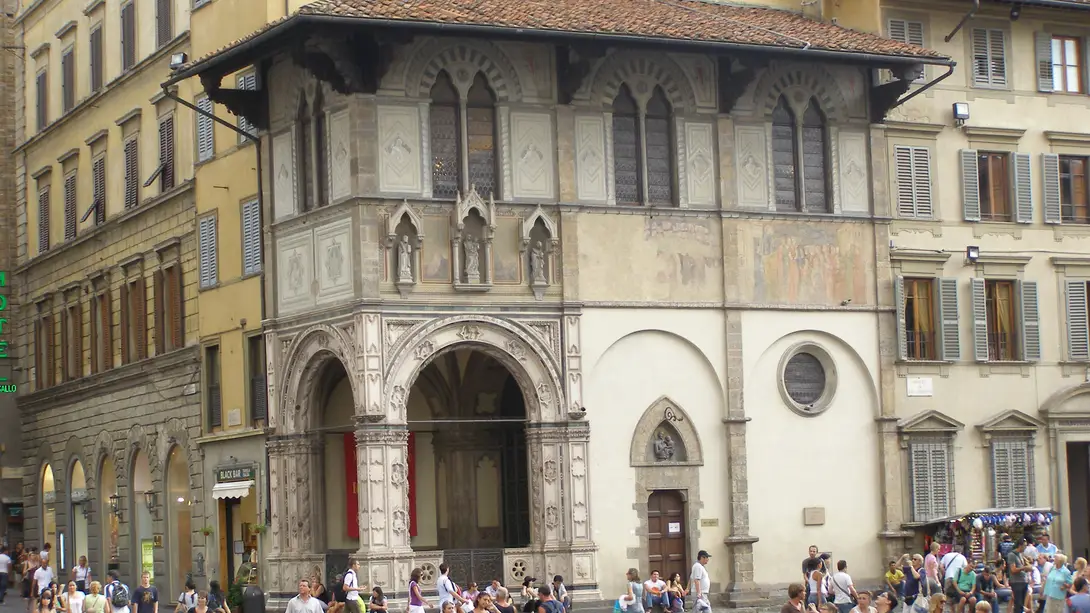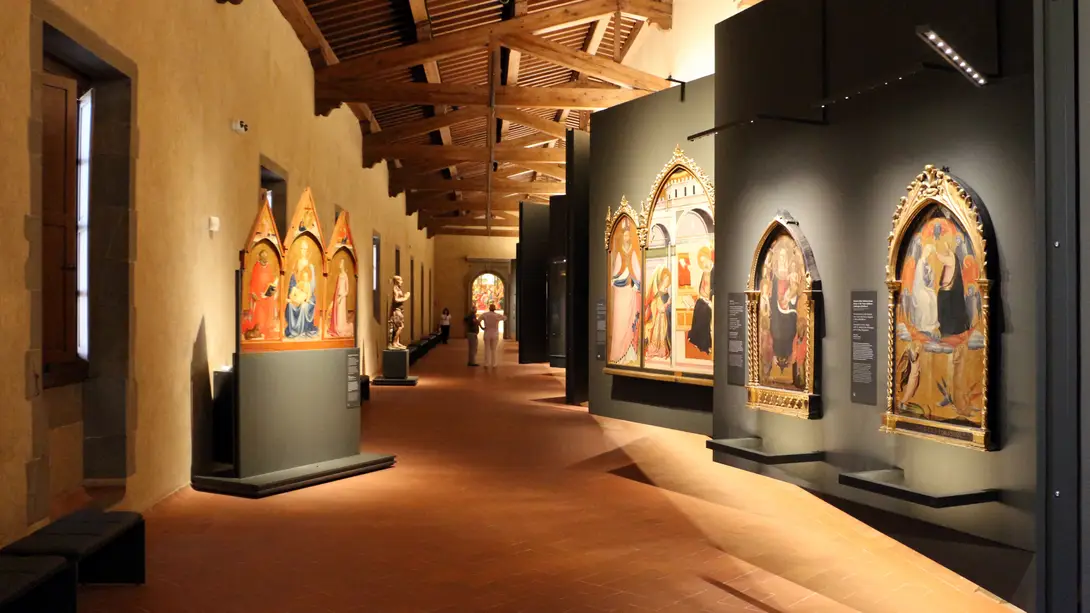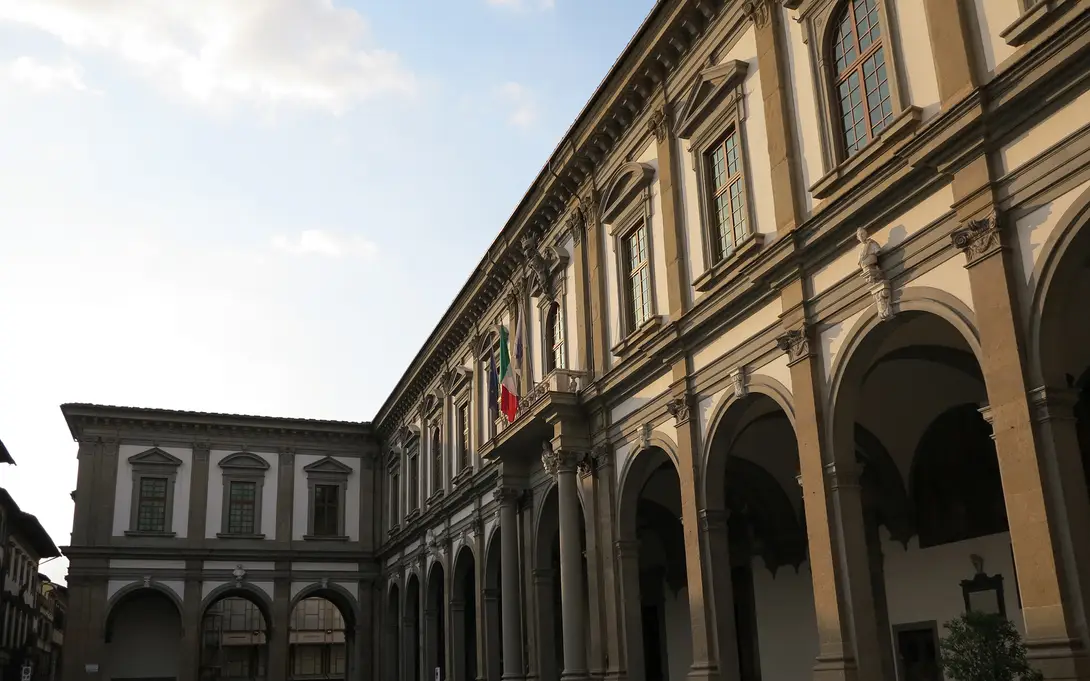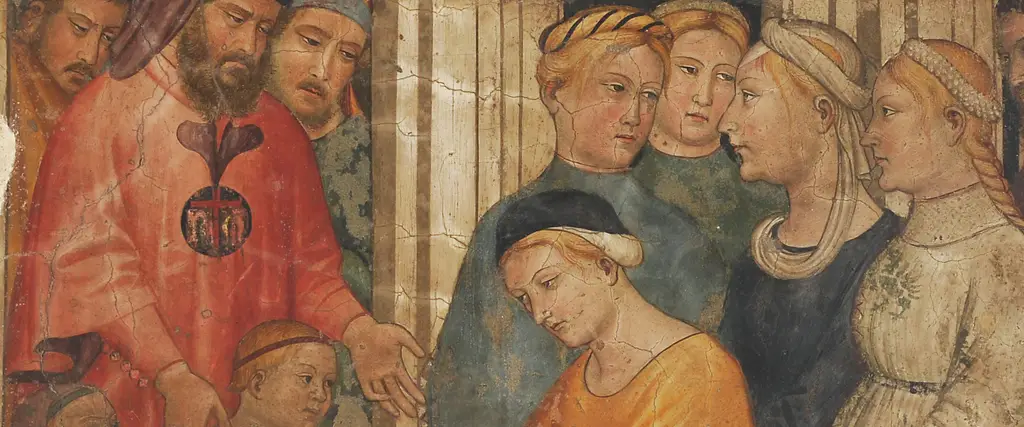
Pilgrimage and hospitality
Since the 13th century, Florence represented a key point in the roadway system of central Italy, both in terms of ordinary road system and pilgrims’ itineraries, particularly those leading to or coming from Rome.
The strategic position of Florence, one of the largest and richest cities in Europe in that period, has certainly contributed to the birth of a dense network of reception facilities (for pilgrims and more generally all people in need), evidence of a fervent spirit of charity, both religious and secular, that has always distinguished our city.
Many of these structures, including the so-called “Spedali”, were built along the main roadway - both immediately outside and inside the urban fabric - crossing the city from North to South: from the northern gate (Porta San Gallo, now Piazza della Libertà) to the southern one (Porta San Piero Gattolino, now Porta Romana).
The Spedale of Santa Maria Nuova, located in a very central position, is one of the most famous and certainly worth a mention. The structure, still active since 1288, was founded by Folco Portinari, father of Beatrice, muse of Dante. In the fourteenth century, in Florence, there were thirty Spedali with more than a thousand "beds"! During the same period, a new form of institution, called Confraternita (Brotherhood), was very popular in Florence, and many of them were born thanks to the impulse of the well-known Dominican preacher Pietro da Verona (St. Peter the Martyr). He contributed to the foundation of two important institutions: the Misericordia di Firenze, still active today and the oldest in Italy, and the Compagnia del Bigallo. The first was involved in the transportation of the sick people and the burial of the dead, the second took care of orphans. Another important structure in the field of childcare is the Istituto degli Innocenti, whose prestigious headquarters, designed by Filippo Brunelleschi in 1419, are located in Piazza Santissima Annunziata.
Some Spedali – like the very important one of St. Gallo, just outside the homonymous door Porta San Gallo, unfortunately completely razed to the ground during the siege of 1530 – left no traces; others instead - such as the one of San Matteo, current location of the Academy of Fine Arts and its world-famous Gallery - have completely changed their function. Finally, the Spedale di San Giovanni di Dio, in Borgo Ognissanti, also very important, was founded in 1382 by the Vespucci family and reached its maximum splendour in the 18th century; now it’s in need of restoration for a new use.
All sites of this itinerary are accessible: each one was partially turned into a museum, to let visitors know these important institutions, their history and their peculiarities.
Comune di Firenze
The places
Stages
Museo della Misericordia
The Museo della Misericordia (Florence's Brotherhood of Mercy museum) in Piazza del Duomo in Florence, bears witness with objects and works of art to the long history of this important charitable institution, founded in 1244.
Although the Arciconfraternita della Misericordia of Florence was founded in the 13th century, it still carries out its charitable mission in favour of its neediest neighbours and the sick. In its historic headquarters is a museum in which are collected objects, images and documents relating to the seven centuries of life of one of the city's longest-lived and most active institutions.
Among these are the most significant objects used over the centuries by the brethren, such as the ‘zana’ or the ‘cataletto’ (to transport the sick to hospitals or lazzeretti), robes, cylinders, and ancient documents. Benedetto da Maiano, Giambologna, Della Robbia, Giovan Battista Naldini are just some of the artists whose works can be admired.
Museo del Bigallo
This museum is a small gem containing works that once belonged to the Compagnia Maggiore di Santa Maria del Bigallo, which illustrate the life of the confraternity over the centuries. These include a frescoproduced by the workshop of Bernardo Daddi in 1342, featuring the oldest known depiction of Florence; it is possible to make out the Baptistery and the Cathedral in the process of construction, with the façade as conceived by Arnolfo. The first floor of the museum houses frescoes formerly on the façade of the building of the Bigallo and paintings on panel and canvas.
Museo degli Innocenti
This museum collects the historical and artistic heritage of the ancient Spedale degli Innocenti, a building designed at the beginning of the 15th century byFilippo Brunelleschi, in order to welcome the abandoned children (the "Innocents"), in a complex full of refectories, cloisters and dormitories. The children were called nocentini (which is also a very popular family name in Florence).
The museum is made of two different parts: the Art Gallery houses works of art, especially paintings, made between the 14th and the 18th century, such as an “Adorazione dei Magi” by Domenico Ghirlandaio, a “Madonna col Bambino” attributed to Sandro Botticelli, and glazed terracottas by Luca and Andrea della Robbia; on the façade, terracotta roundels represent children in swaddling clothes, showing themselves to the world.
Another, touching part is the section of the museum dedicated to the memory of the lives of abandoned at the Spedale, and it features babies’ small objects left as a mean of identification, called signs.
The rich collection of documents in the Archive shows the life at the Spedale through the centuries.
The Bottega dei ragazzi (Children Workshop) offers activities for children between 3 and 11 with their families, applying the teaching of the Renaissance workshops: “learning by doing”.
The 13th century terrace hosts the Caffè del Verone, a café with a beautiful view, accessible even without the museum ticket.
Museum of Santa Maria Nuova
On June 23, 1288 Folco Portinari, the father of Beatrice, the woman who inspired the poetry of Dante, donated the land in Florence upon which the Santa Maria NuovaHospital was to be built. It is an example of the highest excellence in the Italian artistic, cultural and healthcare heritage. In fact, it is the oldest hospital in the world that is still in operation.
The complex consists of several cloisters, and contains an unsuspected chapel by Buontalenti and frescoed by Allori, one of the hospital's many treasures.
Santa Maria Nuova holds over 700 works of art, including important paintings, frescoes, sculptures and furnishings, and some of the greatest artists of all time have passed through its doors. One of them was Leonardo da Vinci.
